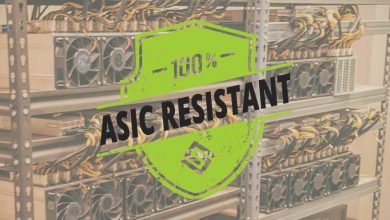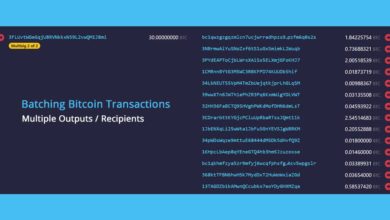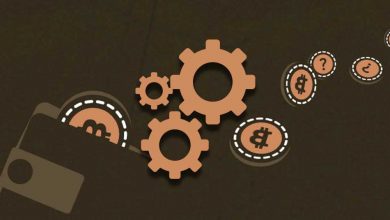What is Monero payment ID & why do exchange need this for (XMR) Deposits?
Often when depositing Monero (XMR) to an exchange you’ll be prompted to use your payment ID.
Binance, Bitfinex, HitBTC, Huobi, Poloniex and every other crypto exchange that supports Monero trading states this clearly.
“Both a Payment ID and an Address are required to successfully deposit your XMR“.
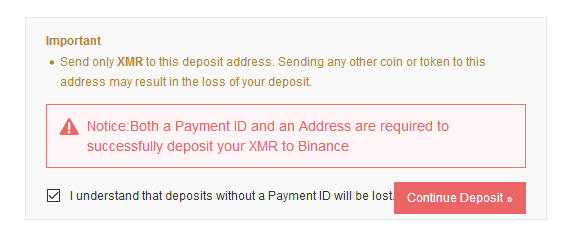
Have you ever wondered why exchange asks payment ID only for Monero deposits and not for Bitcoin, Litecoin or other cryptocurrencies? It is because Monero works quite differently compared to Bitcoin and other altcoins.
Here in this post we’ll explain what a Monero payment ID is, what is its purpose and when to use this. But before we see that; here is a quick overview to Monero’s privacy feature which will help you better understand the need for payment IDs.
Why exchange require payment ID for Monero deposits?
Monero (XMR) is a decentralized, secure, private and untraceable cryptocurrency. Its core feature is offering complete anonymity and privacy to its users. To guarantee untraceable payments Monero uses a technology called Ring Signatures. This technology completely hides the origin, destination and the amount used in any transaction. Unlike Bitcoin, Monero transactions are not available to the public.
In the case of Bitcoin and other cryptocurrencies; exchanges usually will create a new address for every user account and even for each individual payments. However with Monero it isn’t convenient to generate a new address for every user account. So exchanges uses a common address to receive funds from different users.
Also since Monero features stealth address there is no need of separate address for each and every user accounts. Most exchanges will use a single account address for all of their clients. However since all deposits comes to a same address, exchanges uses payment Id to help identify from which person the transaction came from.
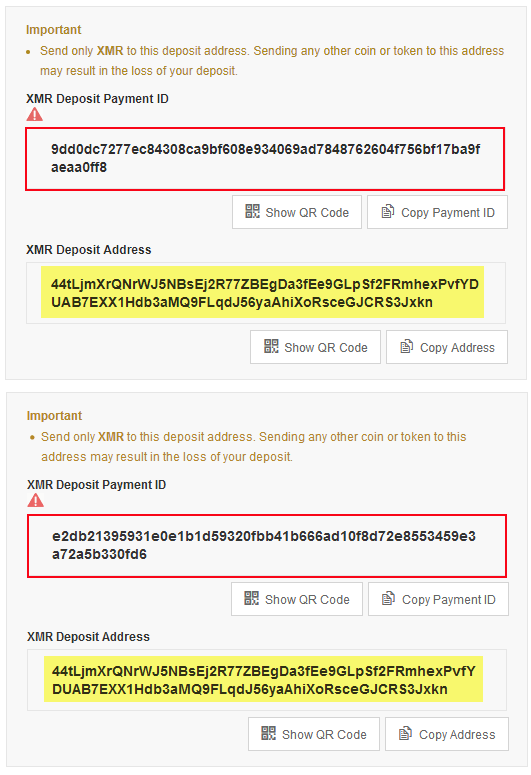
Instead of using different payment address they’ll provide each user with a unique payment ID. It is a convenient tag that helps exchange operators to distinguish between senders.
So now what is a payment ID and when do you need to use this?
What is Monero Payment ID?
In Monero, A payment ID is an arbitrary transaction attachment. It is a hexadecimal string that consist of 64 characters long (32 bytes). And is randomly generated by the merchant or an exchange for receiving payments.
Example of payment ID:
e2db21395931e0e1b1d59320fbb41b666ad10f8d72e8553459e3a72a5b330fd6
You’ll find the use of payment IDs only on services that gets a lots of incoming transaction to the same Monero address. For example exchanges, websites and merchants who accepts Monero.
When receiving Monero payments; merchants and exchanges provides an unique payment ID to the person who is paying. Since each and every Payment IDs are tied to an individual users account it helps them to easily identify the incoming transactions.
In simple words, Payment IDs help receiver to identify the sender. However it does not identify the receiver.
So now how do I use the payment ID?
Using payment ID for Monero deposits
Before making any XMR deposit to your exchange account make sure that you include your payment ID.
In most exchanges when you create a Monero deposit address you’ll also be provided with the payment ID. Do not confuse them.
Monero (XMR) address are comprised of a string of 95 characters and it usually begins with the number 4 (Sub address begins with 8).
Example of Monero address:
496aKKdqF1xQSSEzw7wNrkZkDUsCD5cSmNCfVhVgEps52WERBcLDGzdF5UugmFoHMm9xRJdewvK2TFfAJNwEV25rTcVF5Vp
However the payment ID is random and it consist of 64 characters.
Example of Payment ID:
e2db21395931e0e1b1d59320fbb41b666ad10f8d72e8553459e3a72a5b330fd6
All Monero wallets such as GUI, CLI, Cake wallet, MyMonero currently supports the payment ID feature (which will become obsolete in the future).
Monero GUI:
Go to settings >> layout and enable transfer with payment ID label.
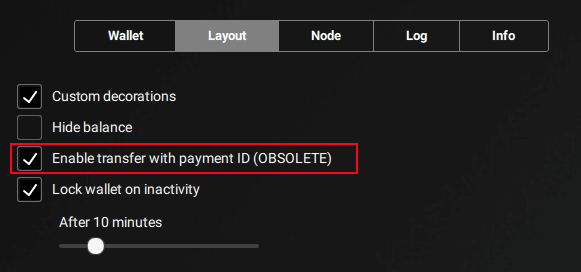
Now go to send tab and you’ll find the option to include the payment ID.
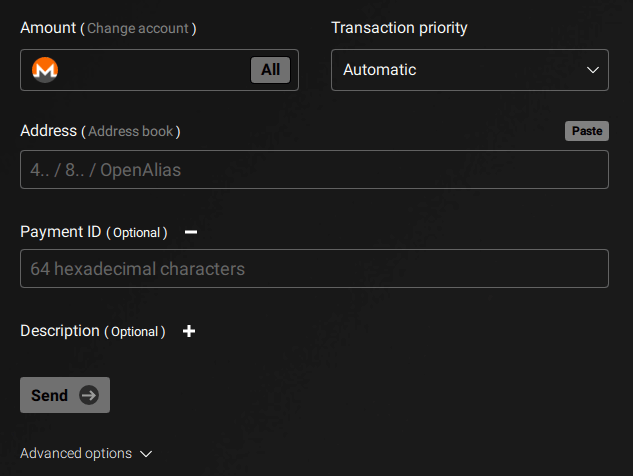
Monero CLI:
When sending Monero from your CLI wallet be sure to use the following format:
transfer [address] [amount] [paymentID]
Note: if you get the following error then be sure to open your CLI wallet with --long-payment-id-support command.
Error: Long payment IDs are obsolete. Use –long-payment-id-support if you really must use one, and warn the recipient they are using an obsolete feature that will disappear in the future.
Anyways as stated by your wallet: “Payment ID” is an outdated feature and it will disappear in the future.
Integrated Addresses
As of version 0.9 Monero uses integrated addresses which is also known as compact payment ID or short payment ID.
Monero integrated address is just your normal XMR address with some extra data bundled within. It contains the payment ID encrypted and embedded in the payment address itself.
The use of integrated address is same as the use of payment ID. The exchange knows from which user the coins originally came from. However the advantage of integrated address over payment ID is that it carries all information in a single string.
Instead of supplying both payment address and payment ID users can use the integrated address feature. So it becomes a lot harder for the user to forger the payment ID. However here’s the catch.
Many exchanges (even the major ones like Binance) do not support the integrated address or compact payment ID feature yet. Thy only support the old style payment IDs and there are still many cases of users deposing XMR without the payment ID.
So now what happens if I forget the payment ID carelessly or use incorrect payment ID while depositing?
No payment ID = XMR lost
Whether you forget the payment ID sting or accidentally use the invalid payment ID; the XMR will be sent to whatever destination address you specified. However as we said without the payment ID the exchange will not be able to recognize from where the payment came from. So basically your Monero address on the exchange will not be credited for the payment you made.
So what happens to my Monero deposit? Are they lost? Well, it depends on how good the exchange support team is. Even if the support team is willing to help you; you need to go through the hassle of creating support ticket, waiting for days and proving them that you sent the money.
Anyways in most cases you’ll lose your Monero if you do not include the payment ID. For example Check out this Reddit post where users shared their experience on this situation.
Okay, but how about withdrawals?
Should I use the payment ID for exchange withdrawals?
The answer to this question depends on where you are sending the withdrawal amount to. If you are withdrawing to your personal wallet then you don’t need to enter the payment ID. It is completely optional and so you can leave it blank. The withdrawn amount will end up in your wallet anyways. Likewise if you are sending payment to your friend or another address you own then you don’t need the payment ID. All you need to ensure is to input the right wallet address.
However if you are withdrawing funds from one exchange to another then the payment ID is mandatory. But also remember that some exchange uses integrated address and not payment ID. For example Kraken. So please check the exchange service or the wallet provider before sending your Monero. This concept may tend to be confusing at the beginning but once you start using you’ll get the touch of it.
If you got any questions or concerns regarding this topic then feel free to post your queries in the comments below.
Did you like this article? Then you may also like the following:
Difference between locked and unlocked balance in Monero
Monero daemon failed to start error: fix

